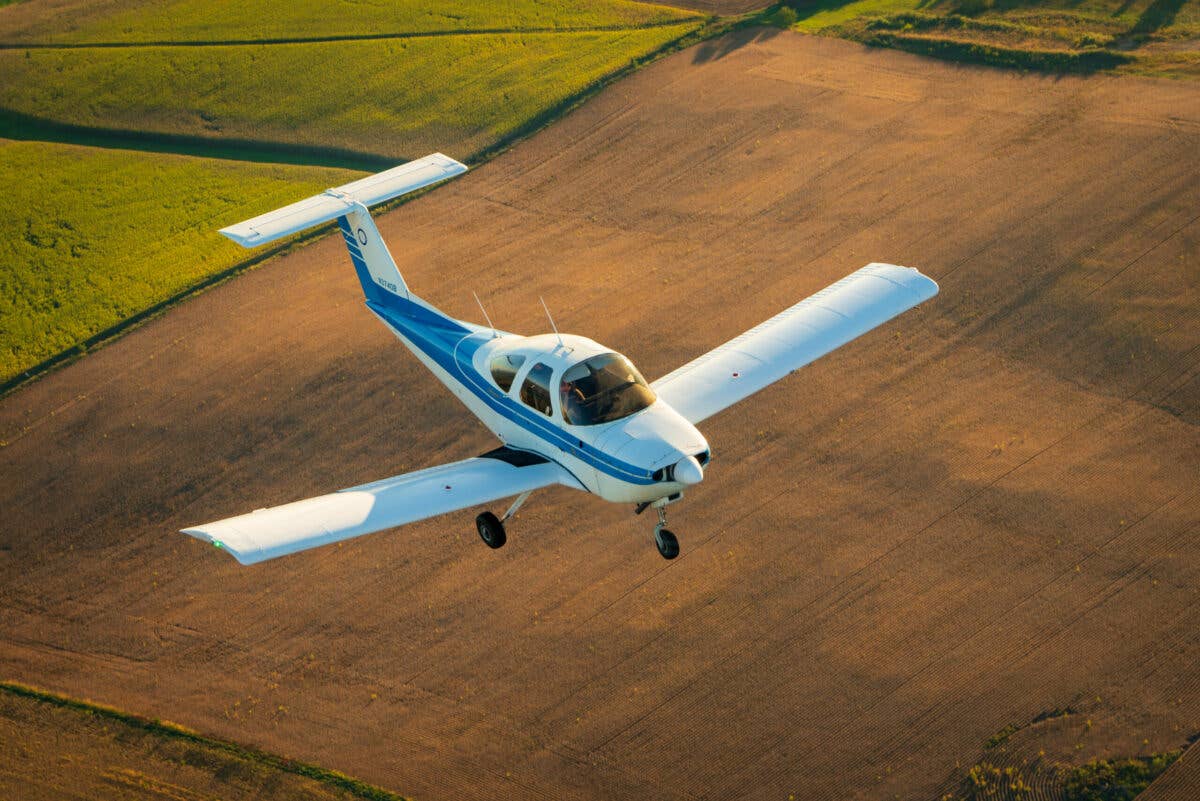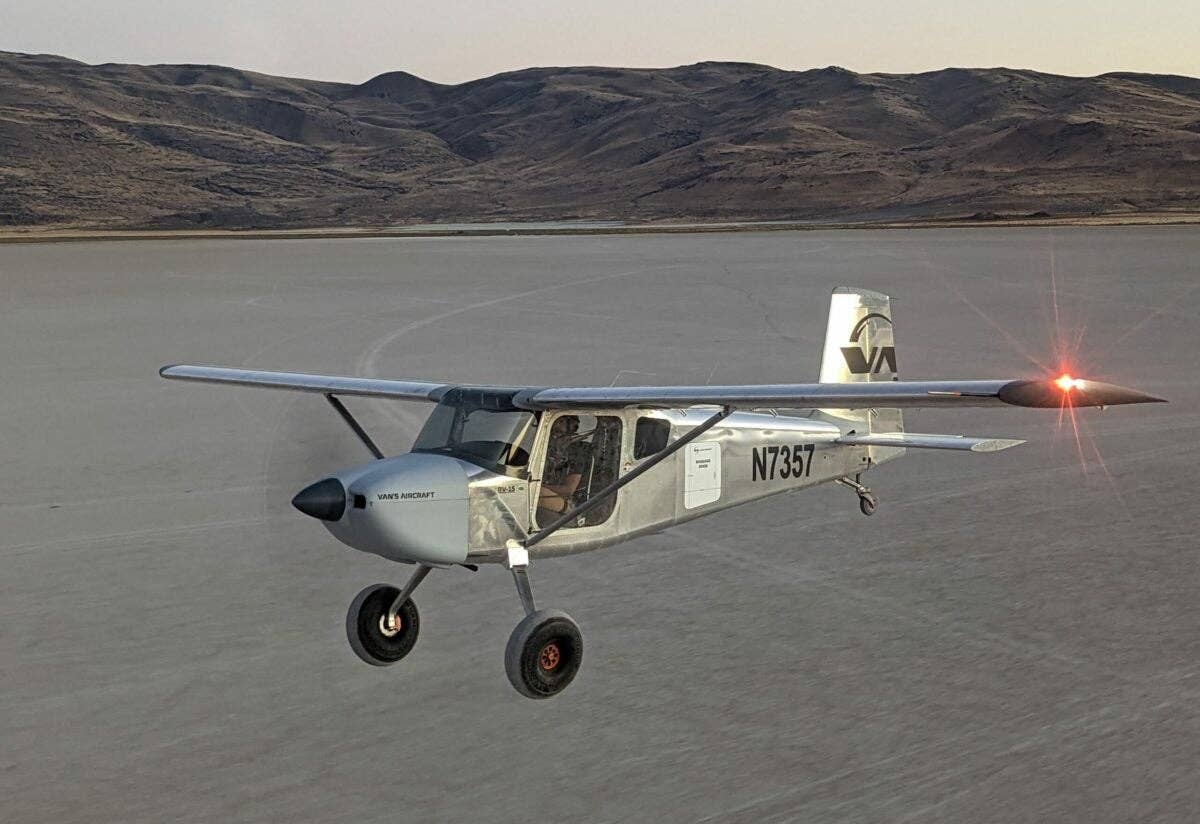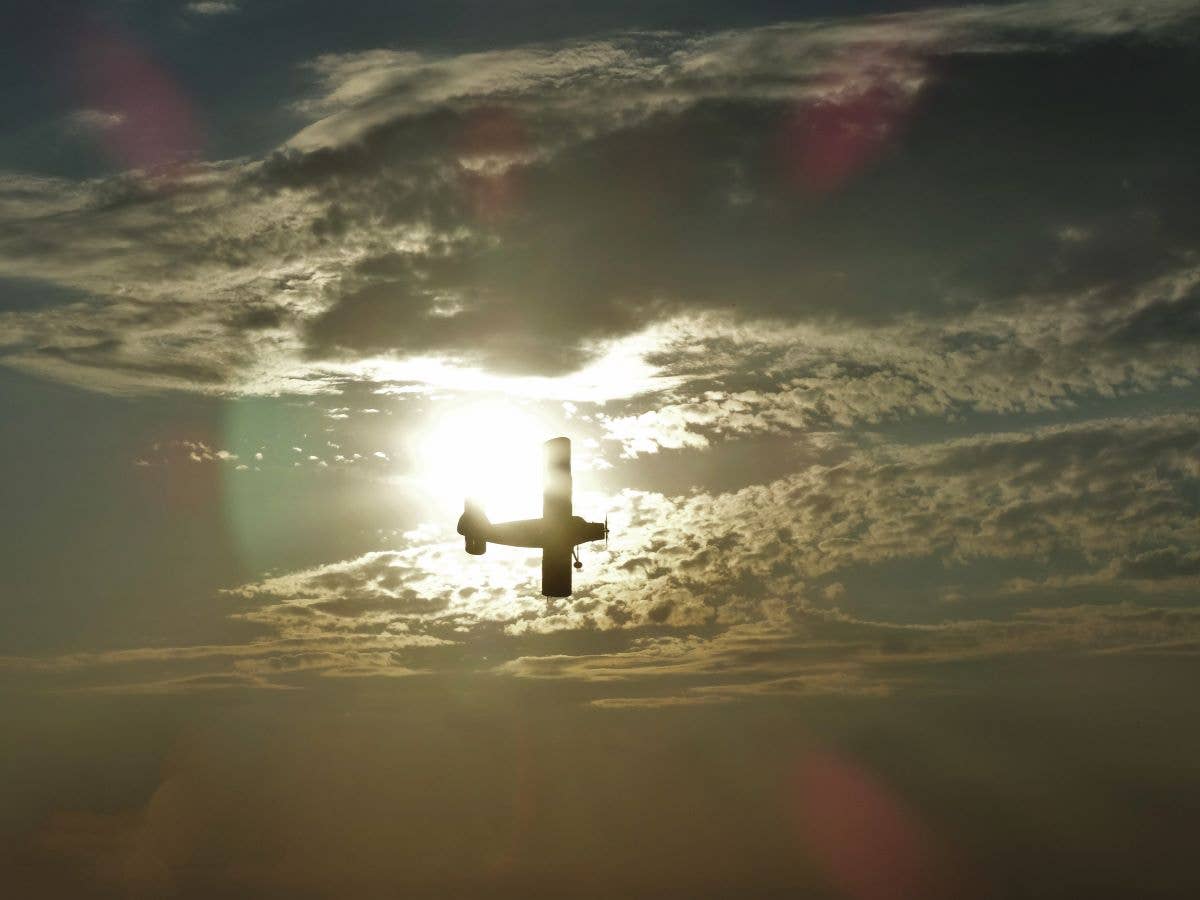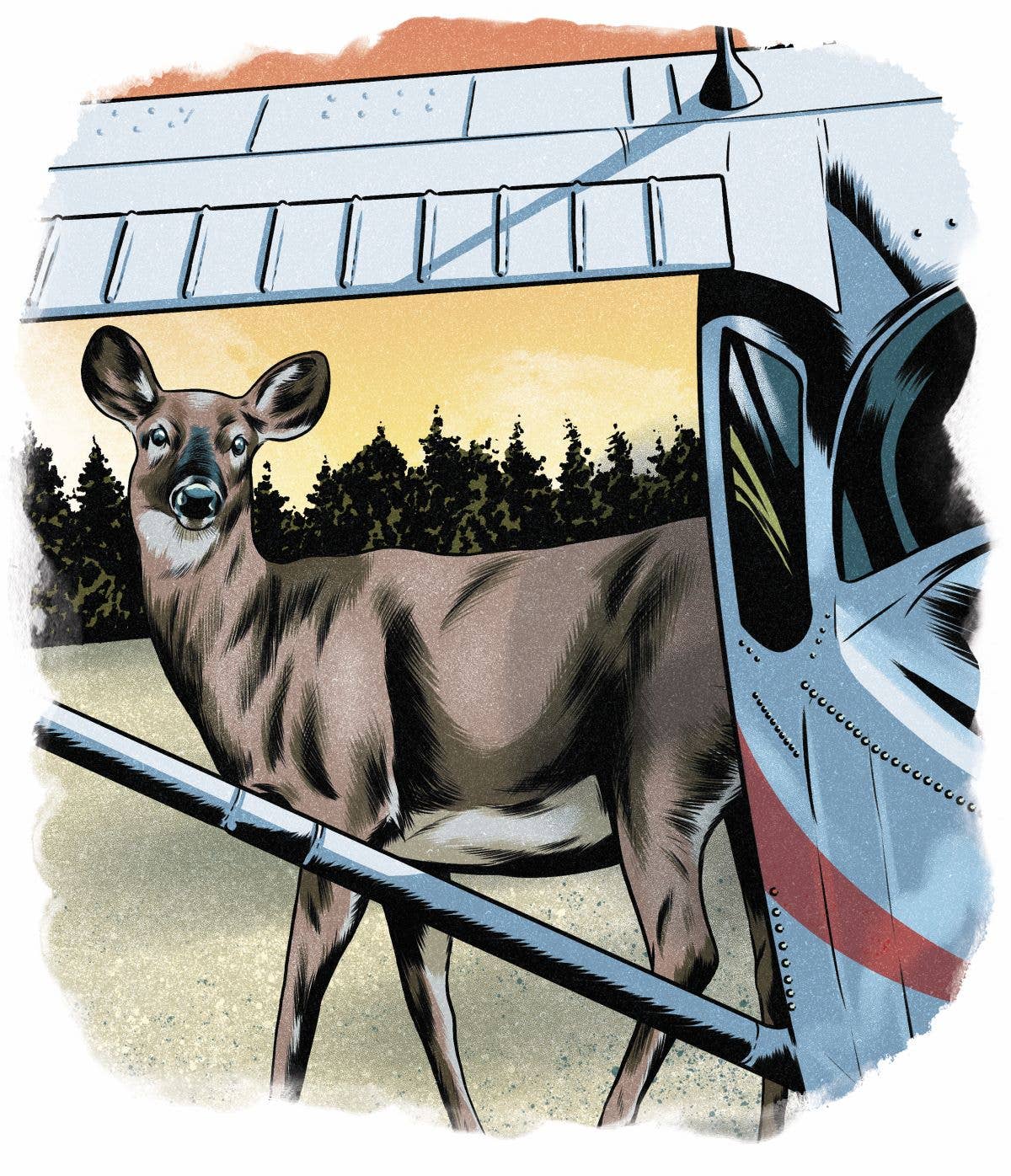The Increasingly Rare Pleasure of the Beechcraft Skipper
Beechcraft developed its own modernized entry into the primary trainer market after compiling a list of the most desired Cessna 150 improvements.

Beechcraft developed its own modernized trainer, the Skipper. [Credit: Jim Stevenson]
Gather a few thousand Cessna 150 pilots and ask them how they’d improve the airplane, and the resulting feedback would be both consistent and predictable. More cabin space would likely top the list. Better visibility from the cockpit would also be mentioned. Additional fuel capacity would likely come up, and some might mention a desire for a more modern design. Back in the early- to mid-1970s, Cessna dominated the primary training market and accordingly, the company had a target on its back. Cessna’s competitors wanted a piece of the pie, and the process started with thorough, competitive analysis. After compiling a list of the most desired improvements, both Piper and Beechcraft went to work developing their own modernized entries into the primary trainer market and came out with new models. Here, we explore Beechcraft’s take, the Model 77 Skipper.
In terms of outward appearance, the Piper PA-38 Tomahawk and Beechcraft Skipper look nearly identical. The visual differences are few and minor, and differentiating them requires some attention to detail. The Tomahawk has square side windows and a full wraparound rear window, for example, while the Skipper has trapezoidal side windows and two separate triangular rear windows.
The Tomahawk's vertical stabilizer extends above the horizontal stabilizer while the Skipper’s is a true T-tail, resembling that of its big brother, the Beechcraft King Air. This was intentional on Beechcraft’s part; in print ads, the Skipper was touted as using “the T-tail design of the Super King Air turboprop.” And while theTomahawk’s gear attaches at the wing, the Skipper’s is slightly narrower and attaches to the fuselage's belly.
Beyond those differences, the two models are near carbon copies in terms of appearance. While the competitive environment in those days was rather cut-throat and corporate espionage has been suggested as the reason for the similarity, inherent technical constraints likely played a large part.
Tasked with utilizing the same power plant (the 112-to 115-hp Lycoming O-235), carrying two people, and offering comfort and visibility superior to the Cessna 150 in a low-wing configuration, it’s perhaps not surprising that both Piper and Beechcraft arrived at the same general layout when designing their new trainers.
In the case of the Skipper, the design goals seem to have been achieved. Cabin space is noticeably more accommodating than the 150/152, and outward visibility is similarly superior by virtue of the low wing and large windows.
Overall, the Skipper’s cabin indeed feels like a more ergonomic, pleasant place to be when compared with the 150/152.
Model History
Unlike other types that were produced over many decades and were offered in dozens of subtypes, the Skipper is simple and uniform. Only the Model 77 was produced, with no special editions or improved versions ever offered. Accordingly, Skippers are consistent in specifications, amenities, and stock panel layouts.
The prototype first flew in 1975, two years after the Tomahawk’s first flight. After lengthy experimentation with various engines and tail configurations, production started in 1979. Beechcraft built a total of 312 Skipper examples through 1981.
At that time, the market began to soften and Beechcraft suspended production, reportedly pending an improvement in market conditions. No such improvement occurred, however, and some unsold Skippers were offered as 1982 models.
Market Snapshot
When it comes to assessing the current market value of the Skipper, its rarity makes it more challenging to evaluate than others. Combing through the offerings of over a half-dozen sources for three months, we were only able to find six examples listed for sale. This includes regular scouring of Craigslists nationwide as well as eBay. Few Skippers were built to begin with, fewer remain today, and naturally, only a handful are listed for sale each year.
Of the examples we found, the least expensive was listed for $30,000 and the most expensive was listed for $45,000. The median price came to $34,000, and the median total airframe time was 4,900 hours. Among 1980s-era aircraft, it's one of the most affordable.
Flight Characteristics
The Skipper stands out on most ramps. A relatively unique design compared with traditional Cessnas and Pipers, the Skipper’s larger and taller cabin creates greater ramp presence than a 150 or 152, as does he T-tail. When it’s time for the preflight, the T-tail becomes more of a nuisance than a benefit, as close inspection and snow/ice removal are far more cumbersome than with a conventional low horizontal stabilizer.
With a cabin that places the seat 7 inches higher than the 150’s, boarding the Skipper feels quite a bit different. Rather than ducking beneath an eye-level wing to enter a relatively claustrophobic cabin, one climbs up onto the Skipper’s wing and steps through a comparatively massive, welcoming door.
After settling into the seat that’s perched atop the low wing, the outward view is open and bright. Headroom and shoulder room are ample, and with 5 additional inches of cabin width compared to the 150, husky occupants needn’t inhale deeply to shut the doors. This additional space also allows occupants to wear multiple layers and winter coats without feeling too cramped.
Beechcraft engineers began with a clean sheet when designing the cabin and panel, and accordingly, the ergonomics are outstanding. The panel is clean and uncluttered, the circuit breakers and radios are all positioned above the level of the yokes, and the engine instruments are intuitively organized immediately above the throttle and mixture levers.
Stepping on the brakes and handling the controls, it becomes evident that those same engineers wanted to make the diminutive Skipper feel like a larger Beechcraft. The yokes are substantial and exhibit none of the flex inherent in the Tomahawk and 150. The rudder pedals are large aluminum affairs, solid and beefy. And most of the touchpoints are similarly reinforced to provide an overall feeling of quality compared with other bargain-basement types.
Performance-wise, the most limiting aspect of theSkipper is the meager useful load. With 30 gallons of fuel capacity, the full-fuel payload is only 400 pounds. With the addition of optional avionics and typical cabin items, a Skipper pilot must be vigilant about passenger weights and may consider leaving some fuel behind for shorter flights.
With 115 hp on tap, the reality of always operating within a few hundred pounds of maximum takeoff weight makes for a relatively lazy takeoff roll and half-hearted climb performance. The book claims a climb rate of 700 fpm is achievable at gross weight, but as with many types, an aging engine and airframe make such numbers appear rather optimistic in reality. Taking off and climbing are not what it does best.
After leveling off, the Skipper can cruise at 105 knots at 2,700 rpm and about 95 knots at 2,450 rpm, numbers on par with many other two-place aircraft in the 100-hp range.
In flight, the Skipper is defined not by any particular performance number, but rather by the quiet competence with which it handles. The solid-feeling controls are smooth and effective, relaying a feeling of robust quality. Handling is entirely predictable and unremarkable, with no unusual traits or characteristics. One simply asks the Skipper to pitch, bank, or stall, and the airplane does as expected without comment or complaint.
Regard the T-tail with some caution, as it has the propensity to act differently during takeoff and landing than conventional tails mounted lower on the empennage. That said, the effect was less noticeable in the example we flew compared with the Tomahawk. Once again, the Skipper generally does as asked with-out complaint.
Ownership
Without question, the single most challenging as-pect of Skipper ownership is the rarity of the type. With such a small fleet size, airframe parts can be difficult to source, qualified and experienced instructors can be hard to find, and support from other owners is not nearly as robust or commonplace as with other types.
The problem is significant, and it’s not getting better. In 1982, most if not all of the 312 examples built were flying. Twenty years later, reports offered that roughly 210 Skippers were active on the FAA register. Today, after another 20 years have passed, only 118 examples appear on the register. If this trend continues, the Skipper will be virtually extinct by 2042.
Accordingly, a prospective Skipper owner must be willing to become a parts-sourcing enthusiast, seeking out and procuring parts before they’re needed. This may involve saving keyword searches on eBay to receive notifications when parts are listed and monitoring salvage websites for wrecked Skippers from which parts can be taken.
There’s a fine line between stockpiling and hoarding, however. To serve as a responsible steward of the type, one should engage with other owners and be willing to sell or exchange spare parts as needed. Making spare parts available to the entire owner group helps to keep the remaining Skippers airworthy and flying, and establishing such goodwill also helps to ensure you will be able to find and obtain parts in your own time of need.
With a 2,400-hour engine TBO and a fuel burn of 6 to 8 gph, ongoing operating expenses are minimal and so are the insurance premiums. One owner reported that with a $25,000 hull value, the annual premium to cover a zero-time pilot was $1,100. This year, when the policy was adjusted to a $35,000 hull value and all covered pilots had more advanced ratings, the annual premium dropped to $700.
Perhaps because so few Skipperswere produced, few airworthiness directives (ADs) apply to the airframe. Of the 11 applicable ADs listed on the FAA database, only one involves a repetitive inspection. It’s fairly straight-forward in nature, requiring a dye penetrant inspection of the nosegear fork axle assembly every 500 hours, and a visual inspection of the assembly every subsequent 100 hours.
Although some 165 supplemental type certificates (STCs) are approved for the Skipper, most are relatively minor. With the exception of those that modernize the panel and avionics, few will have an appreciable effect on the value of an individual airplane. Nor will any of the approved STCs increase horsepower or performance as the vast majority are related to instrumentation, LED lighting, oil filters, and ADS-B installations. Accordingly, most Skippers are largely unchanged from their factory configuration today.
The Beech Aero Club is the official type club of the Skipper. A well-organized and vibrant group, it serves as a source for technical documents and forums in which owners can ask for and provide advice. Like the aircraft itself, however, Skipper owners are correspondingly fewer than owners of other types, and even within the type club, some effort is required to locate experienced owners and maintainers.
The Skipper is one of the few ways to obtain a well-refined, nicely-flying, 1980s-era aircraft in the mid-$30,000 range. The low price of entry reflects the scarcity of airframe parts and type expertise. But with a popular, commonly-found engine and the ever-increasing reach of online networking, the Skipper’s most significant weakness can be manageable with appropriately-adjusted expectations.
In the end, a well-maintained Skipper will likely serve as an enjoyable personal airplane for decades to come.
BEECHCRAFT SKIPPER
Price: $30,000 to $45,000
Powerplant (original): Lycoming 0-235, 115 HP Max Cruise
Speed: 105 mph
Endurance: 4.9 hours
Max Useful Load: 580 lbs.
Takeoff Distance Over a 50-ft. Obstacle: 1,350 ft.
Landing Distance Over a 50-ft. Obstacle: 1,300 feet ft.
Insurance Cost: Low
Annual Inspection Expense: Low
Recurring ADs: One Minor
Parts Availability: Poor
Stalls are Very Adequate for Teaching Purposes
Beechcraft took nearly six years to develop its new trainer, the Skipper, using the GAW-1 airfoil that Cessna had initially tapped for the Model 303 Crusader. The result was a stately if unexciting ride that the company promoted extensively in FLYING's pages in the early 1980s. Beech tested the airplane with both a conventional tail as well as the T-tail it eventually delivered with. In the September 1979 issue, Richard Collins described flying the new take on training aircraft.
"A Beech design goal for the Skipper was to develop an airplane that would stall cleanly and not fall off and start to spin without provocation. The airplane is approved for spins, but Beech wanted it to spin only when the pilot demanded it, not accidentally, at the drop of a wing.
"Their goals have been met. Aerodynamic warning of a stall is good, without an excessive amount of tail buffeting. The Skipper also has what must be one of the world's loudest stall-warning horns. The airplane can be held in a stall without tending toward an instant spin; while it is stalled, you can hold the wings level by using ailerons alone and not provoke the airplane. The stalls are very adequate for teaching purposes."

Subscribe to Our Newsletter
Get the latest FLYING stories delivered directly to your inbox






